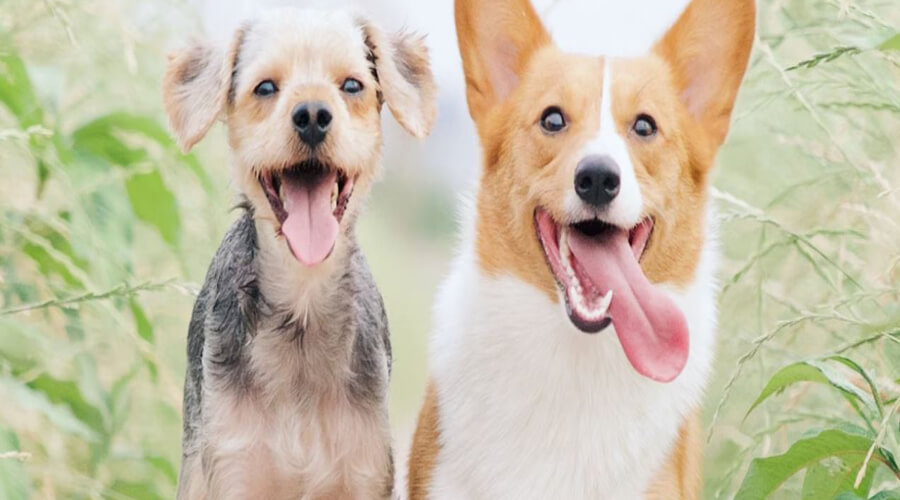
The Ultimate Guide to Dog Breeds: Characteristics, Temperament, and Care Needs
Introduction
Dogs are more than just pets; they’re family members, protectors, and loyal companions. With over 300 recognized breeds worldwide, each dog comes with unique characteristics, temperaments, and care requirements. Whether you’re a first-time dog owner or an experienced pet parent, understanding these elements can help you provide the best life for your furry friend. This comprehensive guide explores popular dog breeds, their traits, behavioral tendencies, and specific care needs.
Section 1: Why Understanding Dog Breeds is Essential
- The relationship between breed traits and their historical purpose (e.g., herding, guarding, companionship).
- How breed-specific characteristics impact behavior, training, and care.
- Examples of mismatched homes and breeds leading to behavioral issues.
Section 2: Dog Breeds by Size and Characteristics
1. Small Breeds
- Examples: Chihuahua, Pomeranian, French Bulldog.
- Characteristics: Compact, adaptable to small spaces, often energetic despite their size.
- Care Needs: Frequent grooming for long-haired breeds, attention to dental health, and regular indoor play.
2. Medium Breeds
- Examples: Beagle, Cocker Spaniel, Border Collie.
- Characteristics: Balanced energy levels, good for families, and highly trainable.
- Care Needs: Daily exercise, socialization, and mental stimulation.
3. Large Breeds
- Examples: Golden Retriever, German Shepherd, Great Dane.
- Characteristics: Gentle giants, great companions, often require ample space.
- Care Needs: High-quality diet, regular exercise, and joint care as they age.
Section 3: Temperament: What to Expect from Different Breeds
1. Friendly and Social Breeds
- Examples: Labrador Retriever, Golden Retriever, Beagle.
- Traits: Gentle, outgoing, and great with families.
- Best For: First-time owners, families with kids.
2. Independent and Reserved Breeds
- Examples: Shiba Inu, Afghan Hound, Chow Chow.
- Traits: Aloof but loyal, require patience during training.
- Best For: Experienced dog owners.
3. Energetic and Work-Oriented Breeds
- Examples: Border Collie, Australian Shepherd, Siberian Husky.
- Traits: Highly intelligent, thrive with structured activities and jobs.
- Best For: Active individuals or families.
Section 4: Care Needs of Different Breeds
1. Grooming Requirements
- Short-Haired Breeds: Minimal grooming; weekly brushing is sufficient.
- Long-Haired Breeds: Frequent grooming to prevent matting (e.g., Afghan Hound, Maltese).
- Double-Coated Breeds: Seasonal shedding requires deshedding tools (e.g., Siberian Husky).
2. Dietary Needs
- Breed-specific concerns (e.g., large breeds require diets to support joint health).
- Tips for managing food allergies or sensitivities in dogs.
3. Exercise and Mental Stimulation
- High-Energy Breeds: Require activities like agility training or fetch (e.g., Border Collies).
- Low-Energy Breeds: Short walks and indoor play suffice (e.g., Bulldogs).
4. Health Concerns
- Breeds prone to genetic conditions (e.g., Dachshunds and spinal issues, Pugs and breathing difficulties).
- Importance of regular vet visits and preventive care.
Section 5: Training Tips for Various Temperaments
- How training differs between eager-to-please breeds (e.g., Labrador Retrievers) and stubborn breeds (e.g., Dachshunds).
- Positive reinforcement techniques for building trust and encouraging good behavior.
- Socialization strategies for shy or aloof breeds.
Section 6: Popular Breeds and Their Profiles
Highlight 5-7 popular breeds with brief overviews of their characteristics, temperaments, and care requirements:
- Labrador Retriever: Friendly, energetic, and family-friendly.
- German Shepherd: Intelligent, loyal, and versatile.
- French Bulldog: Adaptable, low-energy, and great for city living.
- Beagle: Curious, playful, and excellent with children.
- Poodle: Intelligent, hypoallergenic, and eager to please.
Conclusion
Understanding a dog’s breed is the first step toward creating a fulfilling bond with your pet. By learning about their unique characteristics, temperament, and care needs, you can ensure a happy and healthy life together. Remember, while breed traits provide valuable insights, every dog is an individual, and with love and attention, they can thrive in any environment.
Affiliate Products

